By emphasizing that the most important lesson that must be taken by the entire world in the fight against the coronavirus is to be self-sufficient, the Member of the Coronavirus Scientific Committee of the Ministry of Health Prof. Zeliha Koçak Tufan has said: “Those countries which have sufficient human resources, are capable of supplying drugs and materials, are selfsufficient and prepared have survived”. Prof. Tufan has underlined that interdisciplinary studies must be increased in many areas such as food safety, healthy nutrition and food additives, toxicology, infection control, molecular pharmacology and drug research, bio-defense and epidemiology in tackling with the pandemic.
A member of the Coronavirus Scientific Committee of the Ministry of Health, Prof. Zeliha Koçak Tufan has shared her opinions on the methods to tackle the new coronavirus, the progress made by Turkey in this fight as well as vaccine and drug development studies. Also acting as a member of the Council of Higher Education (CoHE), Prof. Turan has emphasized that false facts about the new coronavirus has negatively affected the fight against the disease and has also stressed that the rapid spread of such information in the form of an “infodemic” or, in other words, info pollution has threatened public health. Our interview with Prof. Turan offers an in-depth perspective towards the fight against the new coronavirus from the point of view of a scientist. Stating that the qualified healthcare labor force is quite instrumental for Turkey’s fight against the coronavirus, Prof. Turan has expressed that Turkey is one of the countries with an outstanding social state perspective. Prof. Turan has also touched upon some least-discussed but highly-important topics such as scientific studies, interdisciplinary collaborations, measures and treatment methods encompassed by the fight against COVID-19.

What are the greatest lessons taught by the corona pandemic to the world?
To be always prepared in every field. Healthcare, science, human resources, food, safety… We have watched on TV channels, borders have been closed and the materials to be exported to some countries have been seized by other countries. Self-sufficient countries have conducted a successful process against the pandemic: Bed capacity of hospitals, the number of healthcare staff, drug and vaccine production facilities, the production of personal protective equipment, food for daily life, clothes and whatever is needed… Countries that have sufficient human resources, are capable of supplying drugs and materials, are selfsufficient and prepared have survived.
Countries that have sufficient human resources, are capable of supplying drugs and materials, are self-sufficient and prepared have survived.
Other diseases have not stepped aside for the pandemic and there have been cases of measles in Africa, Ebola in the Republic of Congo, MERS in Arabia and measles in Mexico and Burundi. When I was in Gambia, I read the research of a student, who wrote that the most common cause of maternal deaths was hypotension associated with blood loss. One can say that this is not possible at these times. When there is no health center and healthcare personnel in rural areas, lives that can be saved with a couple of simple serums or blood supplements can be lost in such countries.
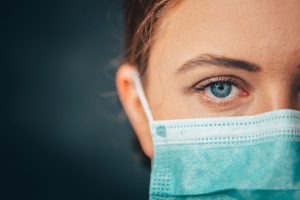
There were countries that had difficulty in drug, vaccine and food supply due to the pandemic. I do not only refer to the drugs intended for coronavirus patients. A drug, a serum and a tube for blood transfusion intended for other diseases in daily life… When a country experiences problems regarding the import thereof, its healthcare services may be interrupted. Being self-sufficient is of great importance. As a matter of fact, other diseases have not stepped aside for the pandemic and there have been cases of measles in Africa, Ebola in the Republic of Congo, MERS in Arabia and measles in Mexico and Burundi. When I was in Gambia, I read the research of a student, who wrote that the most common cause of maternal deaths was hypotension associated with blood loss. One can say that this is not possible at these times. When there is no health center and healthcare personnel in rural areas, lives that can be saved with a couple of simple serums or blood supplements can be lost in such countries. Not only low-income countries, but also many countries with robust economies did not/could not protect their healthcare staff and citizens. Our country was a country following the social state approach in the best way possible.
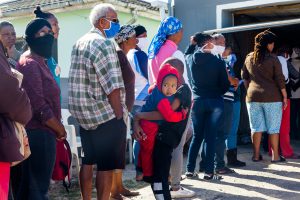
WATCH OUT FOR INFODEMIC!
Given scientific ethics and the principles of scientific responsibility, what are the greatest lessons taught by the corona pandemic to the world of science?
A concept called infodemic has been frequently used throughout the COVID-19 pandemic. We can define this as the difficulty in the identification of the problem and solution due to an information overload. In other words, one can say that we are going through a pandemic of false information or info pollution. The United Nations (UN) and the World Health Organization (WHO) have repeatedly drawn attention to this issue. It also came up with the posts of Antonio Guterres. It is very important not to share any information that is not based on objective data and evidence. This information pollution occurred both in social media and in the academic community. Many people on social media shared everything they found interesting. Fear, anxiety and hesitation spread faster than the pandemic. However, this is a responsibility that poses harm when information whose source is not known is shared. Such pandemics can also be abused by those who want to cause chaos. One should not be an instrument to this. It should be examined whether or not the sources are accurate and reliable. With this pandemic, attention was also drawn to the responsibility of sharing posts on social media.

Many people on social media shared everything they found interesting. Fear, anxiety and hesitation spread faster than the pandemic. However, this is a responsibility that poses harm when information whose source is not known is shared.
ACCURATE KNOWLEDGE MUST BE CONVEYED IN A SENSIBLE WAY
Some information was shared with the public over a single publication in some countries when there was no meta-analysis, controlled trial or sufficient patient data, which posed a serious problem. Findings whose efficacy is not shown in daily life should not be directly shared with the public. Academicians, advisory board and scientific committee members acting as accurate and reliable sources of information were watched on television all over the world. This was very important. However, some information was shared with the public over a single publication in some countries when there was no meta-analysis, controlled trial or sufficient patient data, which posed a serious problem.

Findings whose efficacy is not shown in daily life should not be directly shared with the public. For instance, the duration of persistence of the virus on copper may be an important piece of information for virologists but it is not appropriate to provide this information without including information such as whether or not it will cause infection in human beings or the viral load required for the disease. Even this information was in all international TV channels. How and what information you give to the society is very important.

ACADEMIC INFODEMIC OVERLOAD!
As for the academic leg of infodemic. It was very important for academicians from all across the world to have quick access to the data during the pandemic and all of them were racing against time. However, it would be problematic to immediately put into practice the results of each new publication on topics such as medical treatment, time to intubation and prophylaxis. Any article published in NEJM, Lancet, Science or Nature was covered by international channels within a few hours without any filtering. However, these articles were rapidly published during the pandemic process and some of them were questioned by academicians in terms of methodology and sources. For example, an article on “cardiovascular diseases, medical therapy and COVID-19” published on May 1 in NEJM was questioned so much that a month later, on the 2nd of June, an Expression of Concern had to be published by the journal’s editor as to the effect that the issue was being investigated. The article was withdrawn two days later. Likewise, an article on the use of hydroxy-chloroquine in Lancet was withdrawn. Some academicians and publications have been accused of publication for the sake of interest.
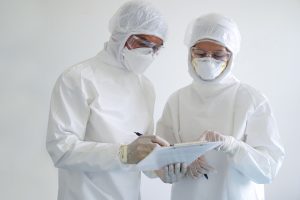
As for the academic leg of infodemic… Any article published in NEJM, Lancet, Science or Nature was covered by international channels within a few hours without any filtering. However, these articles were rapidly published during the pandemic process and some of them were questioned by academicians in terms of methodology and sources. 29 Our Scientific Committee has evaluated all kinds of publications, updated guidelines and guided the treatment right from the beginning, which was really useful for our country and set an important model for other countries.
To be always prepared in every field. Healthcare, science, human resources, food, safety… We have watched on TV channels, borders have been closed and the materials to be exported to some countries have been seized by other countries. Self-sufficient countries have conducted a successful process against the pandemic: Bed capacity of hospitals, the number of healthcare staff, drug and vaccine production facilities, the production of personal protective equipment, food for daily life, clothes and whatever is needed… Countries that have sufficient human resources, are capable of supplying drugs and materials, are self-sufficient and prepared have survived.
What kind of quantitative and qualitative changes do you expect at global level in science, health and R&D in the post-corona period? Will publications and collaborations in these areas increase?
I think that the studies and publications on the use of drugs currently used for COVID-19 regarding varying indications will last for a long time. Since developing a novel drug from scratch is difficult in short term, novel drug studies will be more limited. Instead, the use of drugs whose side-effect profile is already known will of course be a priority in all countries in the short run. In addition to many antivirals, anti-parasitic agents and immuno-modulators are being tested and used within different protocols in COVID-19. Novel drug production and vaccine development studies will also increase depending on funders. According to the London School of Hygiene and Tropical Medicine, which follows the on-going vaccination studies, there are 176 vaccine candidates for COVID-19 across the world. 164 of them are in pre-clinical stage, seven in phase I, four in phase I/II and one of them has reached phase II. We will of course see in time whether vaccine studies will achieve the expected result based on our experience with current vaccines. It would not be appropriate to make any comment without seeing the results of clinical and safety trials.
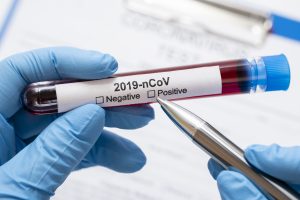
Since developing a novel drug from scratch is difficult in short term, novel drug studies will be more limited. Instead, the use of drugs whose side-effect profile is already known will of course be a priority in all countries in the short run.
Why does it take so long to develop a vaccine or drug? What stages must a trial go through so as to produce a vaccine?
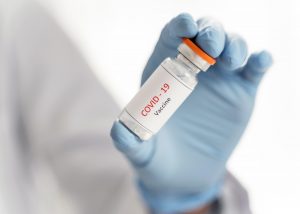
In any case, awareness of scientific research has risen due to the pandemic. It is possible to foresee that the ecosystem of basic science research, drug and vaccine studies will develop, young people will be interested in these areas, and human resources will be on the rise by quality and quantity. However, I think that the short and long-term economic prospects of a given country will be decisive for the increase expected for R&D investments. As a matter of fact, the European Commission announced its budget proposal last week and it was less than expected. The European University Association (EUA) criticized the proposal for a lower budget rise than expected for “Erasmus+” and “Horizon Europe” programs by reminding the contribution of universities to the society and economy. The pandemic has a global dimension and is still going on. Its impacts on the economy vary depending on the country while its impacts will be felt regarding R&D investments.
In any case, awareness of scientific research has risen due to the pandemic. It is possible to foresee that the ecosystem of basic science research, drug and vaccine studies will develop, young people will be interested in these areas, and human resources will be on the rise by quality and quantity. However, I think that the short and long-term economic prospects of a given country will be decisive for the increase expected for R&D investments.
Developing a completely new drug is a difficult process. Only one out of thousands of molecules ends up as a drug. It requires intensive work at different stages from the development of an idea to the phase of licensing. Synthesis of compounds, development of formulae, synthesis of candidate drugs, safety trials, trials with volunteers… You may find a perfect candidate drug and it is great in laboratory settings but in-vitro and in-vivo studies have a very different course and this drug is eliminated if it fails during safety trials. Just consider thousands of drugs which may be eliminated at every stage. Unexpected side effects may also occur in clinical use after licensing and may lead to drug withdrawal depending on the level of side effects. As a matter of fact, the same drug may cause totally different effects in people with different genetic background due to a receptor to which it binds or another molecule into which it transforms. You must be able to handle all of these drawbacks. Although the cost varies depending on the drug, it may be around USD 800 million-1 trillion with an investment that may be extended up to 10 years and more. The cost of vaccination studies is also very variable, where a study estimates that reaching the level of clinical trials would cost between USD 137 million and 1.1 trillion. It may cost a couple of trillion dollars and take years until it is put into use in clinical terms and followed-up by considering failed trials, pre-clinical trials and phase trials. The cost of RNA or DNA vaccines and that of the vaccines containing a protein subunit or viral vector vaccines do also differ from each other. Of course, cost is not the only problem in vaccine development. The body’s response to the vaccine must also be determined. You may experience unexpected effects. Side effects are also very important. As a matter of fact, considering that the vaccine will be administered to masses of people, a side effect you observe in 1 percent of subjects will be present in 10 thousand people when 1 million vaccines are administered. For this reason, all pre-clinical and post-clinical studies and practices should be diligently followed up.
What must be done to facilitate the development of domestic drugs and vaccines? Actually, this requires a culture and ecosystem above all. Lack of qualified staff, the problem of employment in branches with qualified staff and the fact that targeted projects frequently differ following the employment of qualified staff are the most common problems encountered in this respect. Improvements intended for accelerating bureaucratic processes and making the job of researchers easier in clinical trials and drug studies must be immediately taken into consideration. It is necessary to draw attention to the steps required not only for drug development, but especially for the production of biosimilars. I am referring to all drugs, not only antiviral drugs. As a matter of fact, countries experiencing difficulty in supplying drugs from other countries have had a hard time throughout this pandemic. Countries offering drugs for clinical use by their own means did not experience any problem. Those arguing that a country should not produce any drug at a higher cost than the cost of purchase have lost the debate. Advocates of local and domestic production have turned out to be victorious. This is an issue which may be discussed in detail. However, general items of discussion may be listed as training qualified human resources, offering opportunities for qualified human resources by bringing them together, facilitating the employment of foreigners when necessary, reducing bureaucracy, investing in targeted infrastructure, using resources effectively and extending funds.
‘ADVOCATES OF LOCAL AND DOMESTIC PRODUCTION HAVE TURNED OUT TO BE VICTORIOUS’
In order to facilitate the development of domestic drugs and vaccines, it is necessary to train qualified human resources, to offer opportunities for qualified human resources by bringing them together, to facilitate the employment of foreigners when necessary, to reduce bureaucracy, to invest in targeted infrastructure, to use resources effectively and to extend funds.
CLEANING SHOULD NOT TURN INTO A DISEASE
What kind of studies and preparations should be made for the society regarding potential outbreaks? What is initially important concerning any pandemic is access to correct information, rapid diagnosis, the identification of source, agent, mode of transmission, those affected thereby as well as the protection measures intended for preventing the rise of cases. Your healthcare system, R&D centers, and pharmaceutical and material suppliers must be ready. While all this is happening, it is important to keep the society informed and be transparent. Infectious diseases are a hot topic that is constantly present in daily life and the more informed the society is, the more comfortable it will be during the periods of pandemic.
It is necessary to work with professionals while preparing the society. Health literacy is of great importance. What is a bacterium, virus, cold? Correct and smart drug use, the principles of correct nutrition, food additives… Even hand hygiene seems to be simple but those applying it in a correct manner are quite limited. One applies it excessively or in a wrong way. There is a group of people thinking that the excessive application of measures protects them and applying the hospital-specific measures at home. There are people wearing N95 masks on the street by thinking that it protects more against the virus. However, those masks are not designed for daily use and your lungs get very tired when you breathe for a long time. It is recommended to use such masks in hospital settings and in cases where a higher exposure occurs regarding the viral load. We encounter people disrupting their normal flora and causing the development of cleaning addiction in their children out of using hand sanitizers in a very unnecessary and frequent way for the sake of ensuring hand hygiene. Let’s say that a person is staying at his own house, has no connection with the outer world, is constantly pouring cologne on his hands while sitting at the table and continuously pouring hand sanitizer on the hands of his children although they are at home. However, what is meant by hand hygiene in COVID-19 is not to spread the virus with your hand following a potential infection and not to infect yourself by touching your mouth and nose with your hand. The virus does not transmit from hand to blood. What is important is to apply hand hygiene after touching a place when you are outside or when you get home upon contamination. Hand sanitizer provides ease of use and is effective outside. While at home, you wash your hands after contamination or contact with a material coming from outside.
There are people wearing N95 masks on the street by thinking that it protects more against the virus. However, those masks are not designed for daily use and your lungs get very tired when you breathe for a long time. It is recommended to use such masks in hospital settings and in cases where a higher exposure occurs regarding the viral load. We encounter people disrupting their normal flora and causing the development of cleaning addiction in their children out of using hand sanitizers in a very unnecessary and frequent way for the sake of ensuring hand hygiene.
‘CORRECT INFORMATION BRINGS ABOUT SELF-CONTROL’
A lot of documents have been prepared against stigma or, in other words, discrimination regarding COVID-19 patients.
Correct information brings about self-control and prevents panic. It is also important to be informed about both the modes of transmission and the symptoms of the disease. After discharging our Crimean-Congo hemorrhagic fever patients, we would hear that their relatives did not get close to these persons who were completely treated and the society discriminated against them. However, we were working in the hospital every day, we were treating these patients and we did not have as much concern as them even during the peak of infection. But why? We learned about the disease and we knew how to approach patients, how to treat them and how to protect ourselves against the disease. Knowledge is power. A lot of documents have been prepared against stigma or, in other words, discrimination regarding COVID-19 patients.
TURKEY’S COVID-19 PORTALS PROVIDE UP-TO-DATE INFORMATION
How should countries move towards institutional structures to combat pandemics? Are there any examples you can give in this regard from Turkey or other countries? When there is an outbreak anywhere in the world, many infectious diseases specialists provide up-to-date information that you can find at public level and clinician level in many areas, including travel health and preventive health apart from outbreaks. Especially, the “Centers for Disease Control and Prevention” in the United States can be given as an example. However, not only these institutions but also laboratories are active in the field. Our Ministry of Health has really provided up-to-date information throughout this pandemic. Our institutions such as TUBITAK (The Scientific and Technical Research Council of Turkey) and Yunus Emre Institute have created COVID-19 portals. Our institutions and organizations working directly in the field such as Turkish Red Crescent and AFAD (Disaster and Emergency Management Presidency) have also played an important role. National centers are very important in infectious diseases. Refik Saydam Hygiene Center was a very nice model for us. Now, it is carrying out some activities via different directorates general and departments. I wish a similar complex is planned with laboratory infrastructures that are new and comply with today’s conditions. It is very important to be prepared to fight pandemics. It is necessary to follow up-todate information, use early warning systems, have qualified human resources, monitor epidemics around the world, make necessary attempts for the supply of drugs and materials, introduce R&D activities and university-industry collaborations in this sense and, in other words, to be prepared in all respects.
TURKISH HEALTHCARE PERSONNEL HAVE DONE A GOOD JOB
How do you think Turkey is managing the corona pandemic process, especially when compared to other countries? What were the advantages of Turkey compared to other countries in this process? I think that our preparedness as a country is high, and we are dynamically managing processes in the best way possible with the rapid interaction of all institutions. The measures taken in the near and distant future as well as the consequences thereof will be evaluated and discussed. But experiencing a pandemic is something else. It is quite difficult to decide on the measures to be taken both regarding the provision of healthcare services and at public level based on the findings that change in days or even in hours. I think it is our privilege that our medical staff have a high capacity of taking care of patients and the dedication you will not find in any country should be mentioned as a priority. I am speaking very frankly in this respect. A video of an intensive care nurse from Italy crying because of the abundance of patients was shared throughout the pandemic. For years, our doctors including me and nurses always took care of a high number of patients. Of course, improvements have been made and the number of patients per healthcare personnel has decreased as the number of healthcare personnel has increased. There were more than 1,000 patients per a doctor back in 1990s while it is less than 500 now. We have over 165,000 physicians and over 200,000 nurses according to the data of the Ministry of Health while that number was around 50,000 for physicians and 44,000 for nurses in the early ‘90s. Nevertheless, the number of graduates has increased but our number is not enough yet when compared to OECD countries. There is still an abundance of patients due to the ease of access to healthcare services, unnecessary applications and repeated applications. Our healthcare staff performed incredibly during the pandemic compared to many countries that came to a standstill or deadlock and were unable to offer healthcare services when faced with a high number of patients. Of course, the increase in hospitals’ bed capacities, intensive care units’ capacities and the construction of city hospitals were other factors giving our country an edge.

I think it is our privilege that our medical staff have a high capacity of taking care of patients and the dedication you will not find in any country should be mentioned as a priority.
Our academicians and universities also played a major role during the pandemic. Your human resources are very, very, very important! Analysis of the pandemic and its impacts, the reactions to be given in all areas, the follow-up of the results thereof, informing and guiding the society are all associated with your qualified human resources. The Scientific Committee, consisting of academicians from different universities, has offered consultation on 24/7 basis by following up the current data and analyzing the current state for the management of the pandemic. Every area from agriculture to trade is affected by a pandemic. Not only healthcare professionals, but also economists, IT specialists, nutritionists, sociologists, psychologists… Everyone’s expertise and cooperation are required during a pandemic. Many of our state’s institutions have worked with different academicians. Education was one of the most affected areas. According to the data of UNESCO, schools in 188 countries were closed across the country two months ago. Some of them have started opening up their schools. Schools were closed in our country from March 16 right after the diagnosis of the first case. However, education on the digital platform was introduced on the 23th of March.
THERE IS A NEED FOR SPECIALISTS FROM ALL FIELDS
Areas such as food safety, healthy nutrition and food additives, toxicology, infection control, molecular pharmacology and drug research, Biological, Radiological and Nuclear Defense (CBRN) and epidemiology are hot topics in the agenda throughout the pandemic. Years ago, we examined the studies and reports of international institutions and organizations such as WHO, UN, UNESCO, CDC, EUA, compared their data with that of our country, added them into the areas of priority and we have already begun to train people in these areas of priority.

Under the chairmanship of Prof. Yekta Saraç, very fast and dynamic processes were carried out in both the CoHE and our universities. It is not an easy job to transfer thousands of programs to the digital environment by considering nearly eight million students. Our rectors, deans and academicians worked hard regarding this issue. Preparedness was improved through the Digital Transformation Project of Mr. Chairman Saraç carried out under the title of New CoHE, through which lectures were previously given for thousands of students and academicians. Similarly, activities were initiated to train human resources in the areas of priority from biodefense to molecular drug research through “CoHE 100/2000” and “Foreign Research Scholarships” (YUDAB). It was important that these activities were already in place. We are not starting from scratch right now. Areas such as food safety, healthy nutrition and food additives, toxicology, infection control, molecular pharmacology and drug research, Biological, Radiological and Nuclear Defense (CBRN) and epidemiology are hot topics in the agenda throughout the pandemic. Years ago, we examined the studies and reports of international institutions and organizations such as the World Health Organization (WHO), the United Nations (UN), the United Nations Educational, Scientific and Cultural Organization (UNESCO), the Centers for Disease Control and Prevention (CDC) and the European University Association (EUA), compared their data with that of our country, added them into the areas of priority and we have already begun to train people in these areas of priority. These areas are updated to a certain extent each semester. These studies could have been initiated long years ago. Some of our academic areas are still very conservative and interdisciplinary studies must be on the rise. There’s been a lot of progress in this regard but there is still a long way to go. PhD programs launched in clinical branches also contribute to qualified human resources in a different way. For example, the interdisciplinary PhD program titled “Epidemiology of Infectious Diseases” which we organize with our infectious diseases and public health lecturers is now in its third year… Basic scientists must collaborate more with clinicians as well as academicians from engineering fields and social sciences with regard to different subjects. You cannot strengthen your infrastructure without your human resources. In conclusion, both the studies intended for digitalization and the studies initiated for improving qualified human resources in the areas of priority were the aspects developing preparedness.
We are managing many areas of our lives through digital tools throughout this process. In accordance with the measures taken within the scope of the pandemic, university courses were digitally organized. What are the advantages and disadvantages of digital education? Distance education programs and open education programs were already available in our system. They offer alternatives for people who cannot continue formal education for various reasons. It is also an option for those who have graduated from a different program and become a part of these programs for their personal development. Digital education regarding formal education programs was widely used during this pandemic and offered an alternative opportunity for the continuation of education. Since more than 90 percent of students around the world were at home during the pandemic, digital learning achieved a very important level across the world. Global institutions and organizations also supported digital education. UNESCO has provided up-to-date information with a website with resources on many aspects of digital learning such as different management systems, specific tools for teachers and psychological support. The European Association of Distance Teaching Universities (EADTU) has studies on this subject. The European Commission supports digital learning and the European University Association (EUA) has published articles on this topic. In general terms, we should not only refer to courses in formal education. Higher education institutions are not only places where courses are lectured and received. They are institutions where social interaction is in place, students and faculty members interact with each other through extracurricular club activities or various projects, social, cultural and sports activities are carried out, and knowledge and manners are improved. Campus life is important in this respect. In fact, I personally believe that students must observe practices and cultures outside their routine within the scope of national and international exchange programs and experience the mood of different campuses. The more people are encountered and the more different environments are experienced, the more their characters develop. Direct interaction with people and places is very important. This is the case even for academicians. Some universities recognized for their achievements do not engage in “inbreeding” or, in other words, they do not want to directly recruit as academic staff those completing their PhD in their own universities. They want these academicians to work at other universities and gain experience. Just observe the people who have spent their whole lives in the same place and you will see that even their tolerance limits may be different compared to others.
IT DOES NOT REPLACE FORMAL EDUCATION BUT IT HAS UNIQUE ADVANTAGES
We cannot expect that the digital environment will fully replace formal education. Yet, it certainly offers very considerable advantages. Regardless, lessons will be improved in the digital media and will be widely used also after the pandemic. This system will be used more widely than ever before for courses and meetings in cases where there is a shortage of campus or time or in case of adverse climatic conditions. Likewise, students who fail to attend courses due to their sickness or foreign students forced to return to their own countries due to a visa problem will be allowed to attend courses in this way. It will also be improved further and used for our students with disabilities in the future. A disabled student with “epidermolysis bullosa” was trying to continue formal education from home, and this student is very happy now as his/her friends also take digital courses in the online classroom just like him/her. Of course, it is not just about associate degree and undergraduate programs. There will also be wider opportunities for those who want to take courses from other countries or from a different university in graduate programs. Experience gained during the pandemic is of great important in this respect. We can think of it as a mass simulation and dozens of programs were used in different countries. The experience gained out of this pandemic will be a guide for different areas of use regarding digital education and for creating models.
‘‘THERE ARE PERSPECTIVES FROM DIFFERENT COUNTRIES IN THE ‘SPECIAL COVID-19 ISSUE’’
TUBITAK’S Turkish Journal of Medical Sciences published a ‘Special COVID-19 Issue’. You served as an editor in this issue of the journal. Articles of the members of the Scientific Committee and foreign academicians were included in this issue. What perspective does this issue offer for this period? From the last days of January, when the WHO declared the pandemic as a Global Emergency, the world has started discussing the pandemic more and more. This discussion generally focused on how to manage patients and the potential progress of the pandemic. Some reports were shared upon the WHO Delegation’s visit to China, but there was intense literature review on various aspects. It was a huge advantage that the Ministry of Health had already formed the Scientific Committee. The Scientific Committee was both updating the guidelines and developing solutions to emerging questions and problems. I was corresponding with foreign academicians at the time and assessing the situation. Many countries do not have a high number of infectious diseases specialists in contrary to us. There are over 1,500 infectious diseases specialists in Turkey, infection control committees have been working within certain protocols for years, we have trained infection control nurses and we have relevant units and tracking systems in the ministry. In other words, there is a culture. Other areas such as public health are also strong… I attach great importance to the fact that our country is not following other countries but it is followed by them. We wanted to cover and include certain topics that may be of help to other countries during the pandemic process. Members of our Scientific Committee welcomed this proposal. President of TUBITAK Prof. Hasan Mandal also extended a great deal of support and it was decided to publish these articles as a special issue in “Turkish Journal of Medical Sciences” (TJMS). Members of our Scientific Committee also spent time for these articles while working day and night while the pandemic was at its peak. We distributed subjects by the fields of our members.
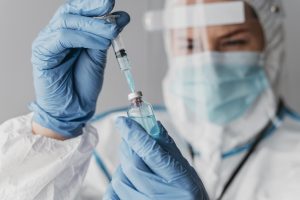
We encounter people disrupting their normal flora and causing the development of cleaning addiction in their children out of using hand sanitizers in a very unnecessary and frequent way for the sake of ensuring hand hygiene.
Since the pandemic affected different areas, we also included non-medical subjects although the journal is an academic journal in the field of medicine. We also covered the roles of national and international institutions and organizations such as WHO, which were highly discussed at the time and are still discussed. Legal dimension of the quarantine was covered by the member of our scientific committee together with our academician from Ankara Training and Research Hospital quarantining our first citizens from Wuhan. Prof. Irfan Şencan, who went to Wuhan and was involved in the evacuation process, wrote about the evacuation processes of countries. TUBITAK’s initiatives on this subject were covered by Prof. Hasan Mandal while Prof. Emine Alp Meşe informed us about the activities of the Ministry of Health. Japan’s former Infectious Diseases Director Prof. Kato Yasuyuki, with whom we previously organized training events, wrote an article on epidemiology while Prof. Matucci-Cerinic from Italy, who is the President of the Scleroderma Foundation, covered the use of immunomodulator drugs during the pandemic. These people were accompanied by our Turkish academicians who had previously worked with them. Prof. Eskild Petersen from Aarhus University, who also works at ProMed and whom we met from our activities at ESCMID, contributed to this report with an article covering insights for Turkey.

It was very difficult to write articles in such an uncertain period during which data changed on daily basis. It was certain that there would have been great articles later on but we have created a document archive. As a matter of fact, it is difficult to obtain the same data even today regarding some issues related to the evacuation processes of countries, the chronology of measures, the statements made by countries and institutions. As the pandemic is a dynamic process, announcements made from web sites and the relevant sources are constantly changing. These were articles written during the most uncertain days of the pandemic. I believe that this will constitute a very important archive as both its medical section reflected the data at the time and sections on the pandemic’s impacts on other areas represented our view at the time. Of course, it also serves the present day as most of the articles have been read by lots of readers and attracted a great deal of attention since those days. Some articles are among the first studies in their respective field and they are getting a lot of citation. For now, the articles on treatment especially including immunomodulator treatments are among the most read articles.


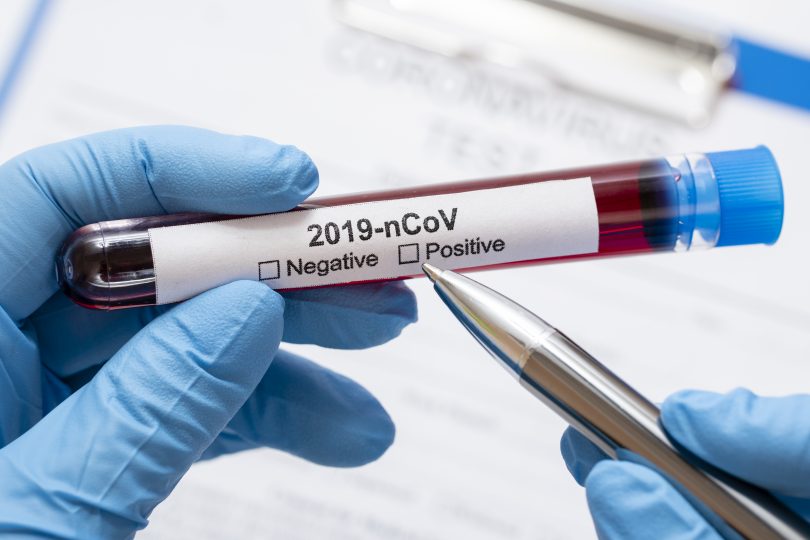



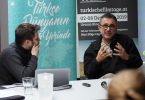


Leave a Comment